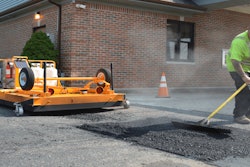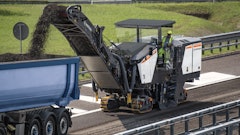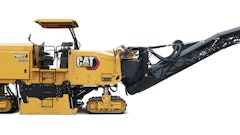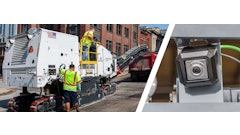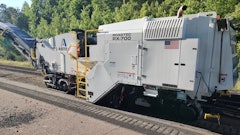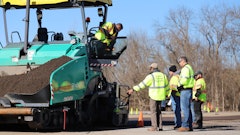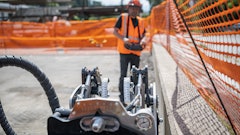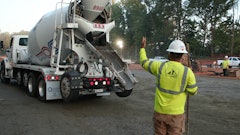
Unexpected downtime on your machines can be detrimental to a project. When that machine is planer or mill, you might be stopping the flow of an asphalt plant, a fleet of trucks and a paving crew.
In an effort to reduce unexpected machine downtime, manufacturers have been working to create more resilient cutting bits. As a result, contractors are seeing increased productivity, less machine wear and a better quality mill.
Building a better bit
Cutting teeth are the number one operating cost for a milling machine, and traditional carbide tipped tools need replacement quite frequently. In response to that, manufacturers are introducing cutting teeth made of new materials that are truly changing the game for the milling industry.
The introduction of polycrystalline diamond bits (PCD, but commonly known as “diamond bits”) are being field tested and are being said to last 40-80 times longer than carbide tips.
“Diamond bits were developed to serve a need for a bit that could be used for high production jobs and jobs where timing may be a concern,” says Kathleen Wurst, lifecycle manager at Caterpillar, Inc. “Traditional carbide wears relatively quickly, interrupting production for replacement. Diamond bits help maximize production.”
Traditional carbide tips require rotation. As the bits rotate, the wear is applied around the radius of the bit, helping it stay sharp longer. However, diamond bits do not rotate as the pick is consistently sharp.
This means diamond bits do not change length as they are used, which is different than carbide.
“Because diamond bits do not wear, they produce a flat, accurate and consistent milled surface pattern,” Wurst says. “Traditional carbide wears as you work, getting dull and growing shorter as they wear, causing inconsistent surfaces and patterns and potentially grade inaccuracies.”
Since these tips remains sharp, there is less strain on the machine and less vibration, increasing the life of the planetaries, drive shafts, stub shafts, bearing, track pad, and other parts and components.
“The machine simply mills easier,” Wurst says. “The tips stay sharp so it’s easier on the engine. This can mean up to 15% in fuel savings since the machine doesn’t have to work as hard and therefore doesn’t burn as much fuel.”
More work, less maintenance
Depending upon cutting conditions and the type of machine, bits can last from just a few hours up to several days. Bringing a $300,000+ milling machine to a grinding halt to change cutting bits can equal downtime that averages several thousand dollars a day.
“With higher quality cutting bits, you’re able to reduce the risk associated with unexpected blade replacement,” Wurst says.
This also helps improve productivity.
“Skanska Asfalt & Betong was using diamond bits on a roadway in Sweden and saw production increased 1.5 hours per day,” Wurst says. “Minimal interruptions in work allowed the entire jobsite (trucks, brooms, cleanup crew) to work more efficiently and helped minimize road user delays.”
Skanska Asfalt & Betong has now milled around one million square meters on the same set of Cat Diamond Bits. The company anticipates completing over 1.25 million square meters before changing the bits.
Another user, Specialized Contractors Inc. in Ohio saw a 5% improvement in productivity, separate from the gains made from not having to change bits, as the mills moved more easily through material.
"Standard life diamond bits last up to 45 times longer compared to a carbide bit and extended life diamond bits will last up to 80 times longer than carbide," Wurst says. "This dramatically decreases the need for frequent bit spotting and replacement, improving job productivity and entire job performance."


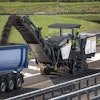

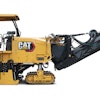
![[VIDEO] Caterpillar Highlights Features of New PM620 Milling Machine](https://img.forconstructionpros.com/files/base/acbm/fcp/image/2016/04/default.5706a8c41d20d.png?auto=format%2Ccompress&fit=crop&h=167&q=70&w=250)


